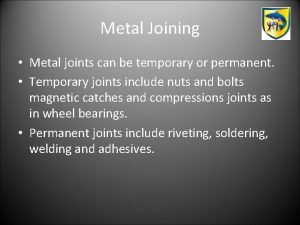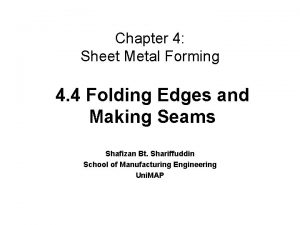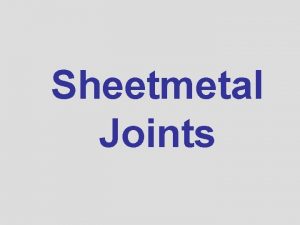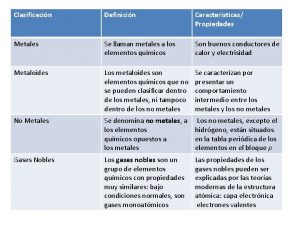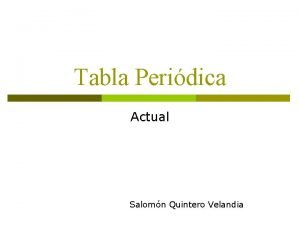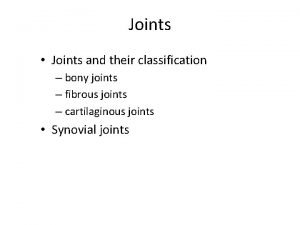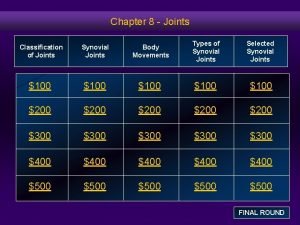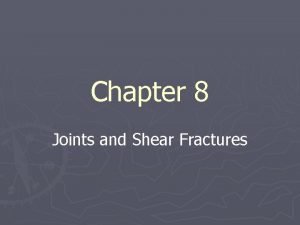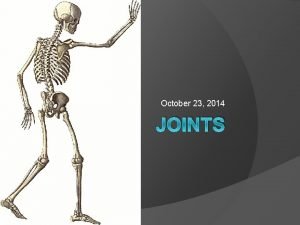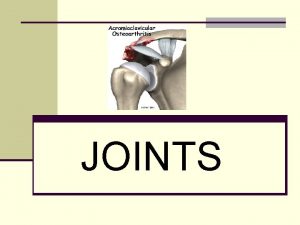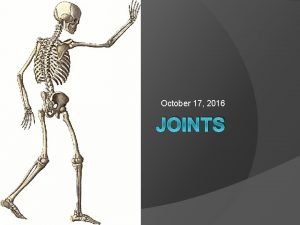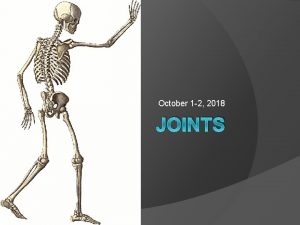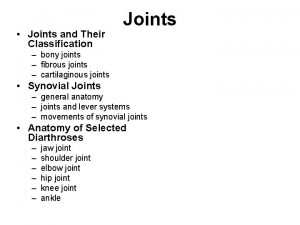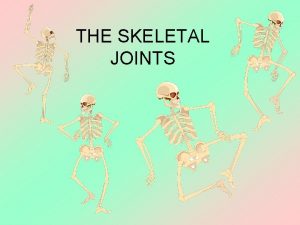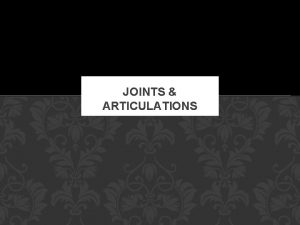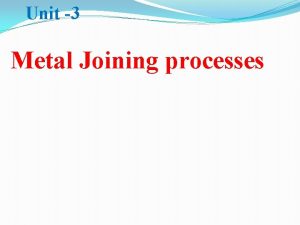JOINING OF MATERIALS 2 Metal Joining Metal joints

















- Slides: 17

JOINING OF MATERIALS

2 Metal Joining • Metal joints can be temporary or permanent. • Temporary joints include nuts and bolts magnetic catches and compressions joints as in wheel bearings. • Permanent joints include riveting, soldering, welding and adhesives.

3 Mechanical Joining. • This refers to joining materials using nuts, bolts and rivets. • There are four different thread types or forms.

4 Mechanical Joining. • The different parts of the isometric thread can be seen below. • When looking at working drawings the size of the thread to be used will be given as M. 5 or M. 6. The M. stands for metric meaning every dimension is in millimeters. The number gives the actual size of the finished thread. or the outside diameter.

5 Mechanical Joining. Bolts

6 Mechanical Joining. Nuts.

7 Mechanical Joining. Internal threading • Holes can have threads cut into them allowing parts to be joined together, this is called tapping. • There are three types of tap: • Taper Tap. • This is used to start of the threads in the hole or to thread thin • • • sheets. The first 5 -6 threads are tapered making it easy to start the tap. Second tap. This is used after the taper tap and is used to finish of the threads in deeper holes. Plug tap. This tap has threads all the way down and is used to thread blind holes. When threading a hole it must be drilled smaller than the tap to be used. When drilling you should refer to the chart next to the drilling machine

8 Mechanical Joining. Tap and wrench.

9 Mechanical Joining. External threading • Bars or shafts can have threads cut into them using split dies. • Here the die is placed in a stock. The top of the bar is usually tapered making it easy to start cutting the threads. When starting the thread it is important to start the thread straight so as to cut a square thread. • The split die has writing on one side and this must be face down when threading. • Hard materials such as steel require oil or grease to be used to lubricate the cutting process. • When cutting threads on a bar or shaft the bar must be the same size as the split die being used. For example cutting an M 10 thread requires a diameter 10 bar.

10 Mechanical Joining. Split die and stock.

11 Mechanical Joining. Riveting • Rivets can be solid or pop rivets. • Solid rivets come in four different forms Round or snap, countersunk, pan or flat head. • Solid rivets form a very strong joint and were commonly used in producing gates, ships and bridge panels. • Pop rivets are much more common now. They are used in the manufacture of aero planes and are a very quick way to join materials.

12 Mechanical Joining. Riveting page 97

13 Thermal Joining Soft Soldering • Solder is an alloy of lead and tin. It melts at a temperature of only 183 degrees c. • Solder is mainly used for electronic circuits and to join copper pipes. • Soft soldering is not a very strong joint as solder is a soft metal.

14 Thermal Joining Fluxes. • Fluxes are used to remove oxides from the surface of the parts being joined together. This ensures that the joint between the pieces are a good quality. • There are two different types of flux passive and active flux. • Active Flux. • Active fluxes remove oxides from the surfaces of the parts and also prevent any oxidation when the soldering is taking place. The parts must be washed well afterwards to remove any remaining flux. • Passive flux. • Protective fluxes prevent oxidation during soldering but they do not clean the surfaces first. They are used for electrical work and anywhere that the parts cannot be washed afterwards.

15 Homework Sheet 21. Mechanical Joining. 1. Name four different types of rivet head? 2. Sketch the four types of rivet? 3. What type of joint do rivets produce? 4. What are pop rivets used for? 5. Sketch a pop rivet and say how it works? 6. Sketch a pop riveter that you have seen.

16 Homework Sheet 22. Mechanical Joining. What is the job of a tap? Name three different types of tap? Sketch a taper tap and a tap wrench. When cutting threads M 6 what size hole would be drilled 5 or 6 mm, explain your answer? 5. In threading what does the m stand for? 6. What conditions would lead to a tap breaking in the hole? 7. Describe all the stages in tapping a hole. 1. 2. 3. 4.

17 Homework Sheet 23. Mechanical Joining. 1. What tools are used to cut external threads? 2. Sketch a split die and name the parts? 3. Sketch a stock for holding split dies and 4. 5. 6. 7. 8. name the parts? When cutting threads of m 5 on a bar what diameter should the bar be? Name four different types of thread? Which thread do we use most in the metalwork room? Sketch the four different thread types and give a use for each? What conditions could cause poor threads when cutting external threads?
 What is temporary joint
What is temporary joint Seaming sheet metal
Seaming sheet metal What is a self-secured joint?
What is a self-secured joint? Adapting and adopting materials
Adapting and adopting materials Favourite cars
Favourite cars Direct materials budget with multiple materials
Direct materials budget with multiple materials Enumerate some useful and harmful materials
Enumerate some useful and harmful materials Natural materials and man made materials
Natural materials and man made materials Blanch def
Blanch def Metals vs nonmetals properties
Metals vs nonmetals properties Uses for non metals
Uses for non metals Propiedades de los materiales metalicos
Propiedades de los materiales metalicos Dp periodic table
Dp periodic table When a metal reacts with a nonmetal the metal will
When a metal reacts with a nonmetal the metal will Is sulfer a metal nonmetal or metalloid
Is sulfer a metal nonmetal or metalloid Example of metal elements
Example of metal elements Difference between metal oxides and non metal oxides
Difference between metal oxides and non metal oxides Metal no metal y metaloide tabla periodica
Metal no metal y metaloide tabla periodica
